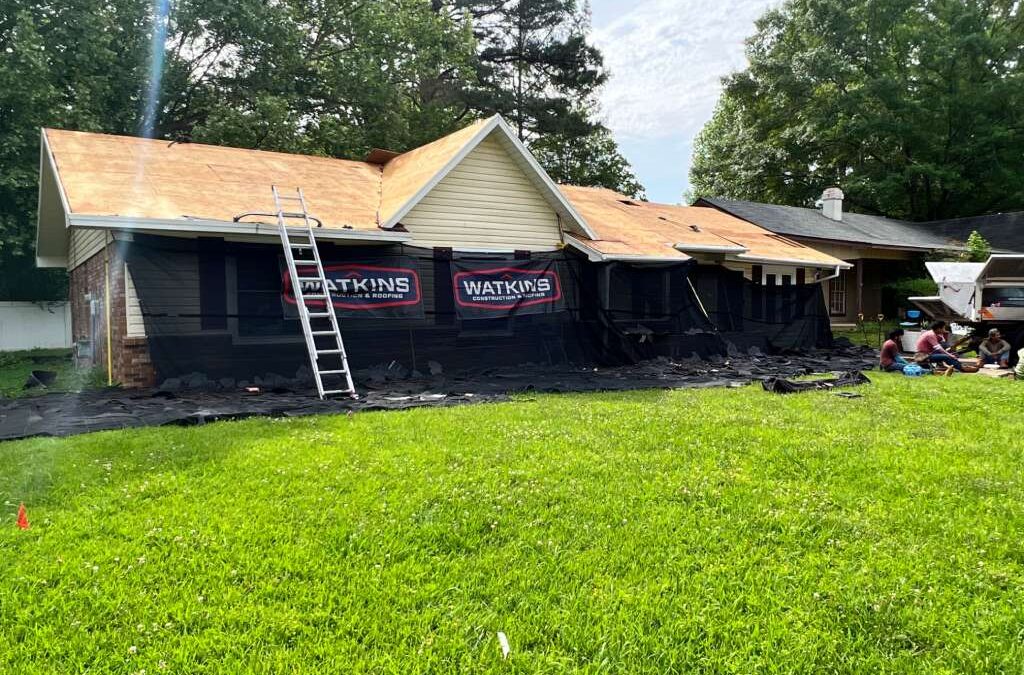Factors to Consider When Choosing Roofing Materials:
Climate: The local climate plays a significant role in determining the most suitable roofing material. Factors to consider include temperature extremes, precipitation levels, humidity, and the frequency of severe weather events like storms, hurricanes, or snowstorms.
Energy Efficiency: Roofing materials can affect your home’s energy efficiency. Some materials reflect more sunlight and heat, reducing cooling costs in hot climates, while others provide better insulation in cold regions.
Durability: The lifespan of roofing materials varies, and some are better suited to withstand the wear and tear associated with specific climates. Longevity is a crucial consideration to minimize maintenance and replacement costs.
Aesthetics: The appearance of your roof is an important factor, and some materials may better complement the architectural style prevalent in your region.
Roofing Materials by Climate:
Hot and Sunny Climates:
Clay or Concrete Tiles: These materials excel in hot, dry climates. They are known for their durability, fire resistance, and ability to keep homes cool by reflecting sunlight.
Metal Roofing: Metal roofs, especially those with reflective coatings, are excellent choices for hot climates. They reflect solar heat and are lightweight, reducing the burden on your home’s cooling system.
Slate Roofing: Slate is a premium roofing material that offers natural cooling properties. It’s durable and fire-resistant, making it suitable for hot climates.
Cold and Snowy Climates:
Asphalt Shingles: Asphalt shingles are versatile and perform well in cold climates. They provide good insulation and are resistant to snow and ice buildup when properly installed.
Metal Roofing: Metal roofs can shed snow and ice quickly, preventing ice dams from forming on your roof. They are also long-lasting and resistant to harsh winter conditions.
Wood Shingles or Shakes: While wood roofing requires proper maintenance, it provides excellent insulation in cold climates. It’s a traditional choice for alpine regions.
Humid and Rainy Climates:
Metal Roofing: Metal roofs are resistant to moisture and can help prevent mold and mildew growth. They are suitable for areas with high humidity and frequent rainfall.
Concrete Tiles: Concrete tiles are durable and perform well in humid climates. They are resistant to moisture and can withstand heavy rains.
Asphalt Shingles: Asphalt shingles are commonly used in humid regions. Choose algae-resistant shingles to prevent the growth of unsightly stains.
Coastal and Hurricane-Prone Areas:
Metal Roofing: Metal roofs are highly wind-resistant and can withstand the impact of flying debris during storms and hurricanes.
Clay or Concrete Tiles: These heavy tiles provide excellent wind resistance and can withstand hurricane-force winds. They are commonly used in coastal regions.
Impact-Resistant Shingles: Some asphalt shingles are designed to withstand hail and wind damage. These can be a suitable choice in hurricane-prone areas.
Additional Considerations:
Roof Color: The color of your roofing material can affect its performance. Light-colored roofs reflect heat and are ideal for hot climates, while dark-colored roofs absorb heat and may be better suited for cold regions.
Ventilation: Proper attic ventilation is essential to prevent moisture buildup and ice dam formation in cold climates. Ensure your roofing system includes adequate ventilation components.
Insulation: Adequate attic insulation helps maintain consistent indoor temperatures, reducing energy costs in both hot and cold climates.
Local Building Codes: Be sure to check local building codes and regulations, as they may specify certain roofing materials or requirements based on your region’s climate.
Conclusion:
For more information, you can reach Watkins Construction & Roofing at 601-488-3179. We service areas in Jackson, Flowood, Clinton, and Ridgeland, MS.


